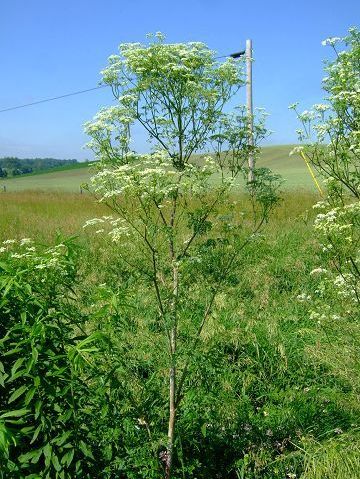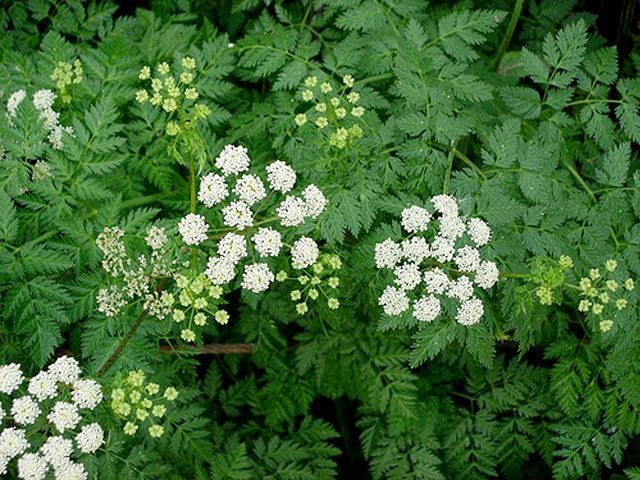Dealing with poison hemlock
Afirst glance along stream beds and roadsides this time of year might reveal a majestic stand of graceful tall white flowered plants. Unfortunately, their beauty is deceptive and the toxicity of these plants called poison hemlock is a cause for serious concern. Poison hemlock (Conium maculatum) is a native of Europe and originally brought to North America as a garden ornamental but has established itself as a noxious pest.
Poison hemlock comes with a toxic history, from allegedly being the plant that poisoned the Greek philosopher Socrates to being used as an execution method for criminals and the Native Americans utilized it for poison arrows. Hitting closer to home are the effects it can have on livestock. Four to five pounds of fresh leaves can be fatal to a horse, one to two pounds for cattle and a half pound or less for sheep. The plant alkaloids act on the nervous system and can also cause birth defects in both humans and animals. The unpleasant odor makes the plant undesirable to livestock when plenty of other forage is available but it can end up in hay or silage as a contaminant.
Poison hemlock is a member of the parsley family and can grow to six to eight feet in ideal conditions. It has a smooth, round sturdy stem with distinct purple streaks. The top is branched with triangular fern-like leaves. White flowers bloom from June to August and are arranged in numerous umbrella shaped clusters. It is a biennial plant, meaning it has a two year growth cycle from seed to mature plant. You will find masses of these plants in low wet areas, along waterways and by roadsides. All parts are poisonous, with the lower stem, root and seeds being most potent. Poison hemlock can be confused with Queen Annes lace due to their similar flowers but stem characteristics are distinctly different, with Queen Anne possessing hairy stems versus the smooth, purple streaked stem of the hemlock.
Once you learn the identification of this plant, it seems we see it everywhere to the point of being invasive. Eradicating poison hemlock is a long-term effort that can involve several methods. Hand-pulling before seeds develop is a good start. It is important to wear heavy gloves and protective clothing while pulling and areas will need to be checked for several years to ensure effectiveness.
Regular mowing can eliminate the weed, and chemical herbicides are also effective, though they come with other complications. Pasture areas should be first priority for control.
On your next walk or drive around the countryside, be on the lookout for poison hemlock. Perhaps working together, this will be a sight of the past as we learn about the problems it can cause and what efforts we can take to eliminate this alien plant.




